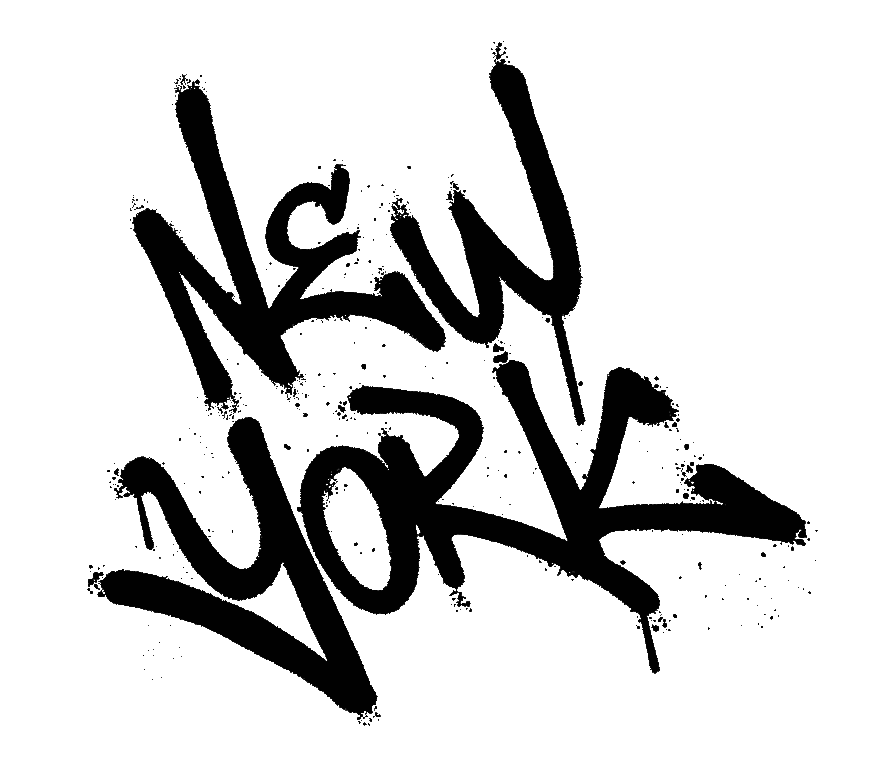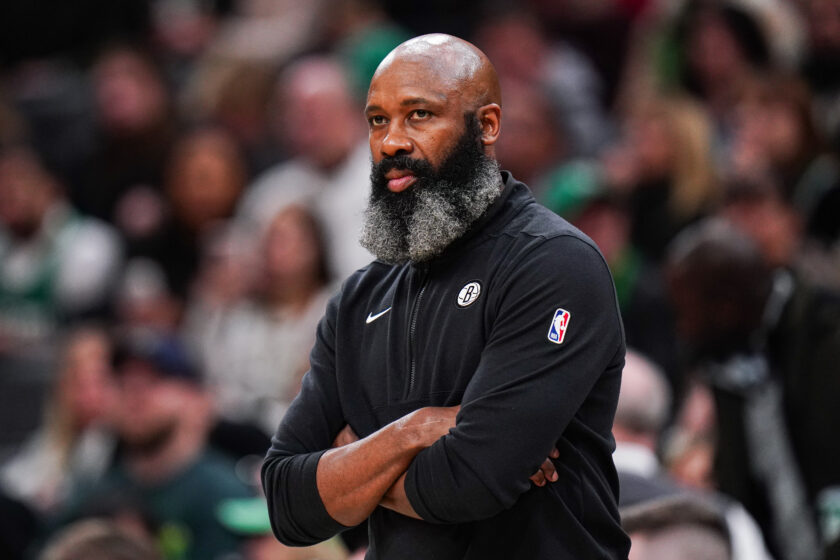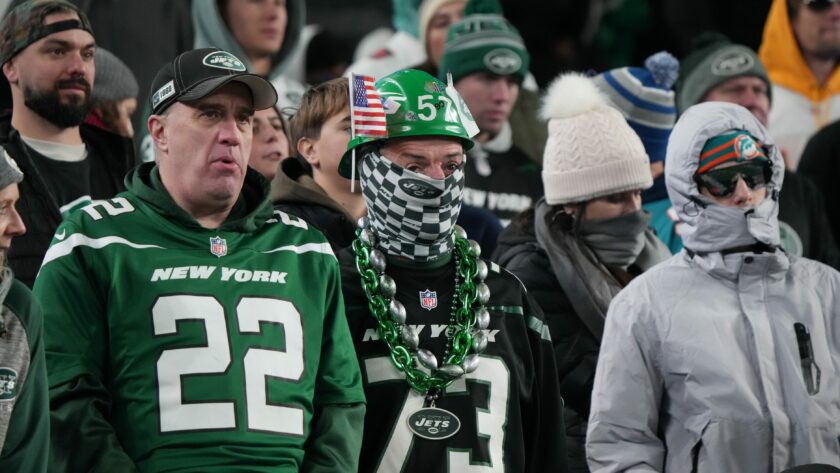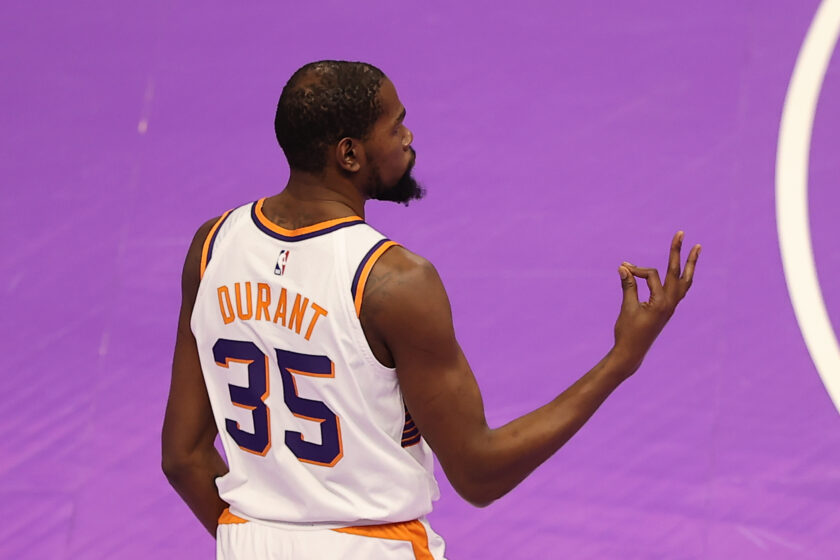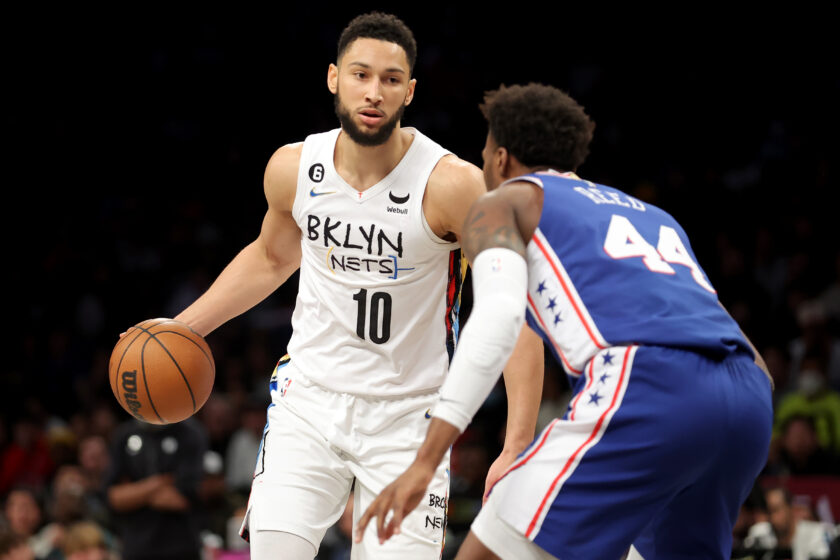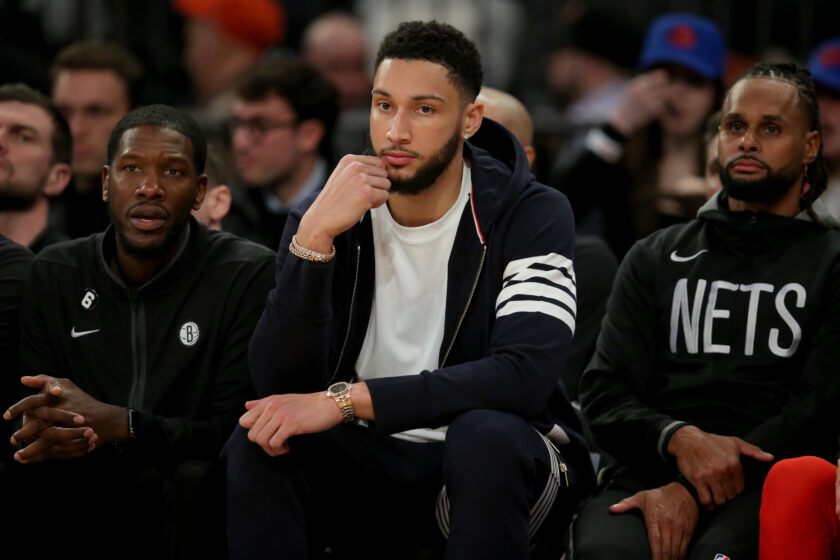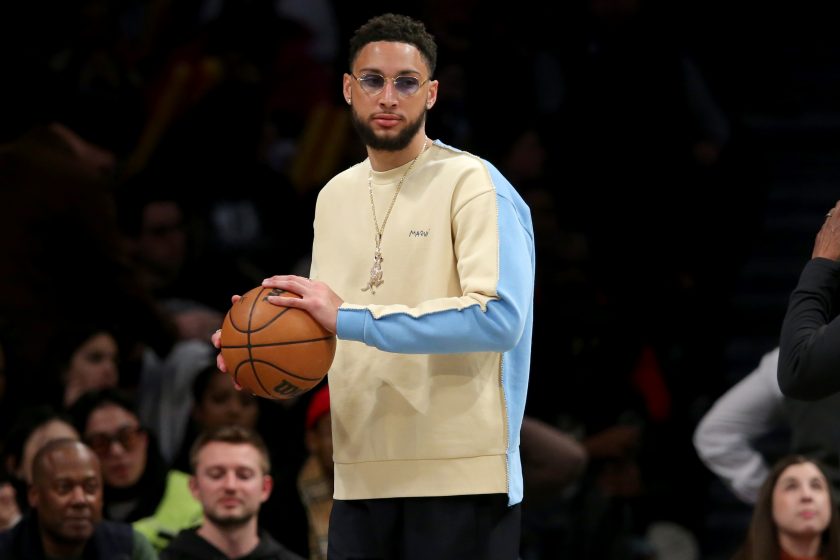Brooklyn Nets monster Jarrett Allen is just getting started
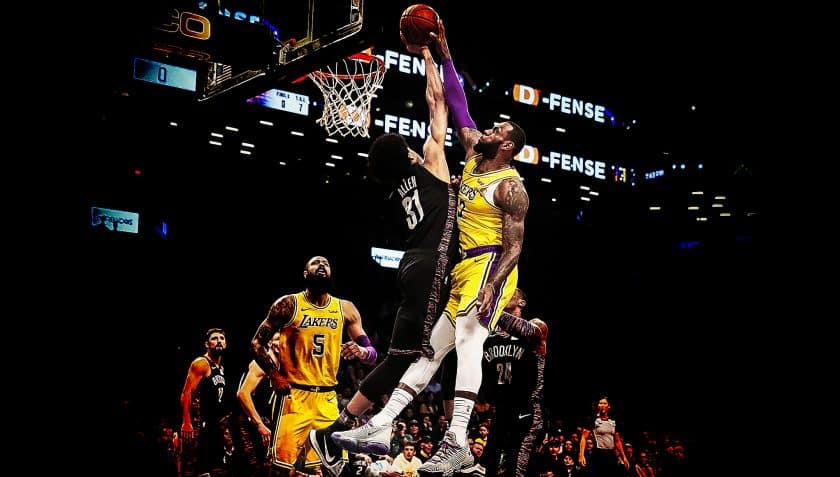
In only his second season, Brooklyn Nets big Jarrett Allen has already established himself as a dominant rim protector. What’s next for the young big man?
The Brooklyn Nets have something special on their hands.
In 2017, the Brooklyn Nets selected a little-known center, Jarrett Allen, with the 22nd-overall pick.
At the time, Allen was nothing more than an unheralded rim-running big from The University of Austin. Projections weren’t particularly lofty. At best, experts hoped he could grow into a DeAndre Jordan-lite.
However, just two years into his career, Allen has exceeded expectations. No one expected this much from the San Diego native.
Typically, the backup center role is the ceiling for big men draftees from the late-first-round … at best. No matter how much the league sways toward pace and space, a promising big man will always be valued more than a talented guard. Just last year, five of the first seven picks were frontcourt players.
Since 2009, here is a full list of the prototypical “bigs” that were drafted in the 20-to-25 range:
Mo Wagner, Harry Giles, Tyler Lydon, Ante Žižić, Brice Johnson, Mitch McGary, Clint Capela, Gorgui Dieng, Mason Plumlee, Fab Melo, Jared Sullinger, Kenneth Faried, Donatas Motiejūnas, and Byron Mullens.
Not exactly a murderers row of talent.
In year two, Allen is already Brooklyn’s full-time starter, meaning that he has surpassed every player on that list (other than Capela). Currently, he’s circulating national headlines for his massive 20 point, 24 rebound game against the Houston Rockets.
However, it didn’t always come this easy for Allen.
During his rookie season, he was stuck behind Tyler Zeller in Kenny Atkinson‘s rotation (it feels almost comical to even type this sentence).
For the first two months of his NBA career, Allen played sporadically. Last November, he received only 15.7 minutes per game and averaged a minuscule 4.4 points and 4.7 rebounds.
Eventually, Allen broke through, earning his first start against the New York Knicks on Jan. 30, 2018. Allen played well, scoring 12 points on an uber-efficient 6-of-6 shooting night.
He hasn’t looked back.
Allen’s immediate impact has caused teammates to speak glowingly about him. Recently, DeMarre Carroll had this to say about the 20-year-old big man:
“He’s just growing before our eyes,” said Carroll to Brian Lewis, “Sean Marks did a great job of getting that guy. He’s been growing every year, and he’s going to keep getting better”
So, what is it about Jarrett Allen’s game that has the fans, coach, and teammates going loco for the Fro-co? (Oi. That was regrettable. Ah well.)
For starters, Allen has already established himself one of the league’s best rim protectors. Allen’s ability to come out of nowhere for highlight blocks has been well-chronicled this season. He’s seemingly made it his mission to block all of the league’s premier superstars.
https://www.youtube.com/watch?v=DmrgPsxQqwE
His latest victim: MVP-candidate, James Harden.
https://www.youtube.com/watch?v=SvX8kRVrC0k
Allen’s fearlessness when contesting shots is incredibly unique. In the age of social media, where humiliating poster dunks can circle the web faster than you can say “World Wide Wob,” many big men avoid the challenge of defending the most ferocious dunkers. “Matador defense” plagues the league more than ever.
Jarrett Allen didn’t seem to get that memo. In fact, he rises up to test the league’s best players.
Statistically, Allen is one of the league’s best shot-blockers. This season, the second-year-pro has posted a 59 percent block rate. That’s the sixth best percentage in the entire NBA.
Perhaps more impressive, Allen contests 13.4 two-point shots per game; a mark that is third-best in the league.
Even though it’s early, Allen’s positioning when hunting for blocks is special. He’s already showcased the ability to defend the rim on the biggest stage. Just this week, Allen made a game-saving rejection in overtime, stuffing James Nunnally’s layup.

The early returns on Allen’s defensive game are promising. He’s the anchor; the first piece in the puzzle to building a potentially lethal Brooklyn defense.
Offensively speaking, Allen has lived up to the rim-runner label. He’s a thunderous dunker, capable of dropping the hammer on all those who oppose him.

He’s got excellent footwork and huge hands which, together, allow him to pirouette in the paint and stretch for highlight dunks.

A heavy majority of Brooklyn’s offense is through pick-and-roll. With lob-catching expertise, Allen is the perfect big man for this style of play. He has an insatiable appetite to sprint down the lane and rise-up for colossal slams. Because of this, the defense needs to account for the Fro at all times. This, in turn, opens up driving lanes for Brooklyn’s guards to probe.
His ability to grab alley-oops isn’t the only way that he benefits Brooklyn’s guards. Allen is a killer screener. His positioning when setting picks for teammates is top notch.

The numbers support this notion, too. He’s seventh in the league in screen assists.
As a reliable rim-protector, a lob-dunk connoisseur, and an excellent screener, Allen has already established a strong floor. If he stopped improving today, Allen would be an above-average starter.
Here’s the beauty of Jarrett Allen: there are still ways that he can grow as a player. With supreme athleticism for someone his size (6-foot-11), Allen is just scratching the surface of his potential. Not to mention, he won’t be able legally to buy a beer until mid-April.
With all of this in mind, here are a couple of options for Allen’s improvement.
Increased physicality and, quite possibly, accentuated versatility
Jarrett Allen is already a polished commodity on defense. But he isn’t a finished product.
Allen can advance his game in a couple of ways. He could bulk up to better defend bruisers. He could also expand his defensive game to the perimeter to stay in front of guards. Or, in hopes of ascending to a multifaceted Unicorn status, he could try to do both.
It appears that Coach Atkinson is already making the choice for Allen.
As detailed by the Ringer’s Jonathan Tjarks, “The list of players Allen has guarded this season features guys of all shapes, sizes, and skill sets. Some of his most frequent opponents are old-school behemoths like Hassan Whiteside, Marc Gasol, and Andre Drummond. Yet he’s also had matchups with small-ball 5s like Jeff Green and stretch 5s like Mike Muscala, as well as guards like Steph Curry, Chris Paul, and John Wall. It’s almost too much to ask of any one player.”
That last sentence from Tjarks (a personal favorite of mine) is vastly important.
It’s almost too much to ask of one player.
Although Allen does have some experience in defending shifty guards and hulking bigs, he hasn’t shown expertise.
Guarding both types of players runs the risk of overwhelming the young center with too much responsibility. To avoid this, Brooklyn should first focus on Allen’s strength and conditioning.
Certain big man matchups can really stymie Allen as a defender. At just 237 pounds, Allen is still rather slender for a big man. Bruising opponents can push Allen around like a rag doll when getting to their spots.

As it stands, Allen is far too easy to dislodge when walling off the paint. It’s one thing if he has trouble handling Enes Kanter or Joel Embiid; both of these guys are among the league’s best post players. Rudy Gobert or Noah Vonleh, on the other hand, should be much easier to stop.
The last clip is particularly telling when dissecting Allen’s physicality.
With one push of a forearm, Houston’s Nene Hilario was able to nudge Allen well under the basket. Offensive foul or not, it allowed for James Harden to sneak in and steal the offensive board. A small shove in the back shouldn’t send a center flying.
The muffed box-out is just one example of Allen’s inability to handle certain types of physicality. When comparing his rebounding numbers to other starting centers, his numbers rank towards the bottom of the list.
Although he has made improvements in this part of his game, his defensive rebounding rate still sits at only 20.7 percent. Atop this list is a much more beefy group of guys.
DeAndre Jordan, Hassan Whiteside, Nikola Vucevic, Andre Drummond, and Joel Embiid are the league-leaders in defensive rebounding percentage. It’s no coincidence that this same group is the stuff of nightmares for Allen while defending the low block.
[sc name=”Nets Center” ]Adding weight to his thin frame would accelerate his rebounding growth. It would also even the playing field while guarding chiseled veterans.
To be clear, this is not a dig on Allen. Very few centers come into the league with the required physicality to bang bodies down low. For most young bigs, adding weight is merely one of the many checkpoints of the NBA game.
Allen’s Nov. 11 performance against Nikola Jokic offered a sneak preview into his possible future.

For the better part of this season, Nikola Jokic has looked like the second-best center in the entire league. He’s a masterful post-player, capable of shaking his defender by using his doughy body and pointy elbows.
Against Jarrett Allen, however, Jokic looked almost overmatched. Throughout the game, Allen was able to hold his ground against the Serbian Center. The Fro displayed verticality that would make Roy Hibbert blush.
And boy, did it ever frustrate Jokic.
You’ll see it in the first clip, but after Allen hounded him into a miss, Jokic turned to the referee and started screaming. This resulted in a technical foul.
Allen recorded five blocks on the night. Three of them came against Jokic.
The threat of Allen’s post defense pushed Jokic out to the perimeter. By the end of the game, a majority of Jokic’s attempts were jump shots. This was no coincidence, either. Allen matched the Nuggets’ Center, blow for blow. Jokic, being as good as he is, countered on the fly by stretching Allen to the perimeter. It didn’t work. Brooklyn won this game 112-110 on a Caris LeVert game-winner.
If Allen strengthens his lower-body, we can expect more performances like this in the future. In doing so, he will come one step to fulfilling his Defensive Player of the Year potential.
Now, although Allen should prioritize his toughness, he shouldn’t completely neglect expanding his range on defense.
I’m not saying that I expect Jarrett Allen to start defending guys like Stephen Curry or Kemba Walker on the three-point line. Only a few bigs in the league are capable of this type of pressure (Anthony Davis and prime Tristan Thompson come to mind). But there are certain possessions where he could cover guards better.
Take these two plays for example:

In both scenarios, Jarrett Allen fails to step out to the opposing guard. He doesn’t even try to. In the second clip, you can even see Spencer Dinwiddie point to where Allen was supposed to go.
Jarrett Allen prefers to stay relatively landlocked to the paint. Unfortunately, this means that he surrenders plenty of open jumpers.
In certain scenarios, his refusal to hedge the pick-and-roll also makes him susceptible to big-man floaters.

There needs to be some sort of effort on these plays.
Getting comfortable with venturing just outside of the circle is essential for Allen. In the long run, it could act as the perfect stepping stone to expanding his range to the three-point line.
If all goes right, perhaps, eventually, Allen will feel confident enough to consistently defend the perimeter. It so, expect plays like this to happen with relative frequency:

Somewhere in there, Allen has the footspeed and wingspan to guard players at the three-point line. Now it’s just about putting it all together and taking things one step at a time.
Adding to his offensive repertoire
Reading this title, you’re probably thinking to yourself…
Great, another young writer who wants centers, like Jarrett Allen, to take more threes.
To this, I say, “Quite the contrary, my friend.”
Offensively speaking, Allen’s biggest territory of concern pertains to finishing around the low block. Similar to his issues with rebounding, Allen tends to get pushed around when executing basic post moves.
To make matters worse, Allen has very little finesse when taking shots at the rim. At many times, he seems a tad bit timid.

For a player of his physical gifts, this doesn’t really make a ton of sense. Allen has excellent hand-eye coordination, and you can see this in his ability to catch tough lob passes. He’s also fairly ambidextrous, capable of finishing with both hands. On defense, his footwork is pristine, so it’s alarming to see him dance around the paint with such uncertainty.
With great balance, sturdy hands, and the ability to finish on both sides of the rim, Allen should be much better at finishing inside. But he isn’t. The stats back this claim up.
Over the course of the full-season, Allen has made only 50.4 percent of his total layups. While this isn’t necessarily a bad percentage, there is room for improvement.
I’m not suggesting that Allen should strive to become the next low-post god (a la Joel Embiid or LaMarcus Aldridge). That’s just unrealistic. He should, however, look to marginally improve this part of his game. As it stands, Allen averages 0.4 post-ups per game. That’s nothing.
If Allen can even slightly uptick his finishing around the rim, it will make him more of a threat on offense.
For now, Allen is still a lethal pick-and-roll lob-threat; he’s a 6-foot-11 Clint Capela. As great as Capela is, I think Allen may be capable of more.
Okay, now I’ll address Allen’s three-point shooting.
Brooklyn’s coaching staff has been pushing Jarrett Allen to take corner threes. The results have been less than inspiring. From the right corner, The Fro has made only three of his total eighteen shots. The from the left corner, things are even more distressing; Allen is 1-for-10.
These misses aren’t pretty, either. Many of them clank off the side of the backboard.

Brooklyn hoped that Allen’s strong free-throw rate (73.9 percent from the line) would translate to immediate success with the long-ball. This hasn’t been the case.
Similar to what I suggested with expanding his game on defense, Brooklyn’s staff must take this process step-by-step. Right now, they are skipping straight from level one to level ten.
It would be nice to see Allen master the art of the consistent 18-footer before hoisting up threes. Gradually expansion has worked splendidly for guys like Brook Lopez, Nikola Vucevic, and DeMarcus Cousins. It might be the best avenue for Allen’s success as well.
Crisp passing
Of all of the things I have listed, this is—by far—Allen’s least concerning weakness. If anything, improvements in this facet of his game should be looked at as an added bonus.
For a starting center, his assist rates rank fairly low. Of the 61 players who qualified, Allen’s 7.8 assist percentage ranks 39th among the league’s centers.
Many times, Allen will struggle with passing out of the double-team (a sin for most young centers). Typically, these passes are well off-target and interrupt the flow of the offense.

Other times, Allen will panic after a series of unsuccessful pump-fakes on the low-block and throw the ball into the backcourt.
Inexperience is a huge reason for these mistakes. It should come as no surprise that his passing numbers from the paint are low as well. (Allen’s assist rates from this paint sit at 3.4 percent).
Errors like this are to be expected from a young big. Learning to pass out of the double team is no easy feat. Some of the league’s best centers are still learning to master this (i.e. Embiid). Others never figure it out. (Looking at you, Dwight Howard).
What makes Jarrett Allen so intriguing as a prospect is the seemingly endless ways he could improve. This piece was not written to be critical of Allen. It was, instead, cultivated to expose how limitless his ceiling really is.
Allen was never supposed to make it this far. But he has. And there’s no reason to believe that he won’t continue to improve.
Center is the toughest position to learn for a young player. Its learning curve is even more severe than that of a point guard.
Jarrett Allen has already shown a strong understanding of the toughest part of the job: rim protection. This puts him well ahead of schedule—perhaps even beyond the likes of All-Star center, Karl Anthony-Towns.
The dirty work is done.
Now, let’s all sit back as Jarrett Allen continues his ascent towards the upper echelon of NBA centers.
[sc name=”Nets Link Next” link=”https://elitesportsny.com/2019/01/18/brooklyn-nets-strategy-an-inside-look-at-kenny-atkinsons-zone-defense/” text=”An Inside Look At Kenny Atkinson’s Zone Defense” ]An NBA fanatic who specializes in the advanced analytics of the game. I cover the Brooklyn Nets here in the city. Follow me on Twitter for semi-witty basketball tweets. @MattBrooksNBA
